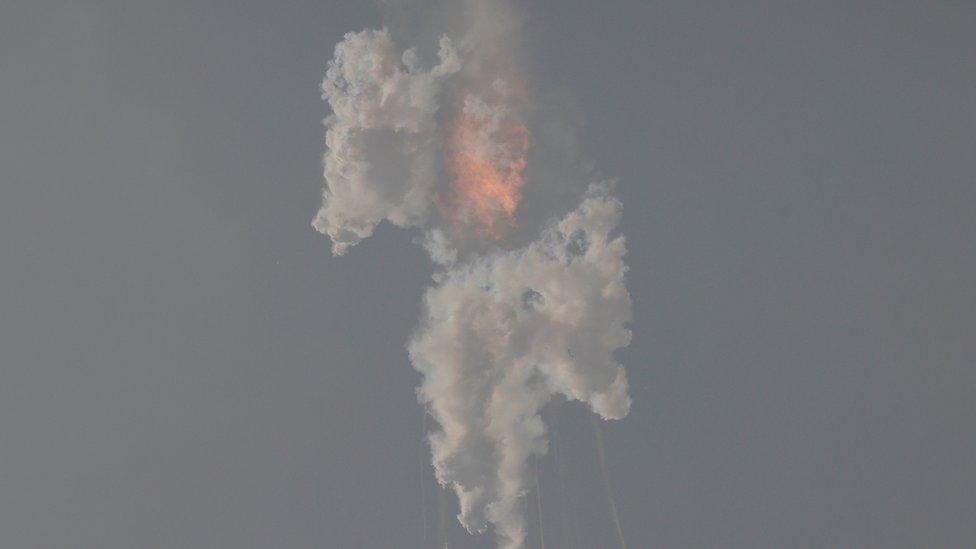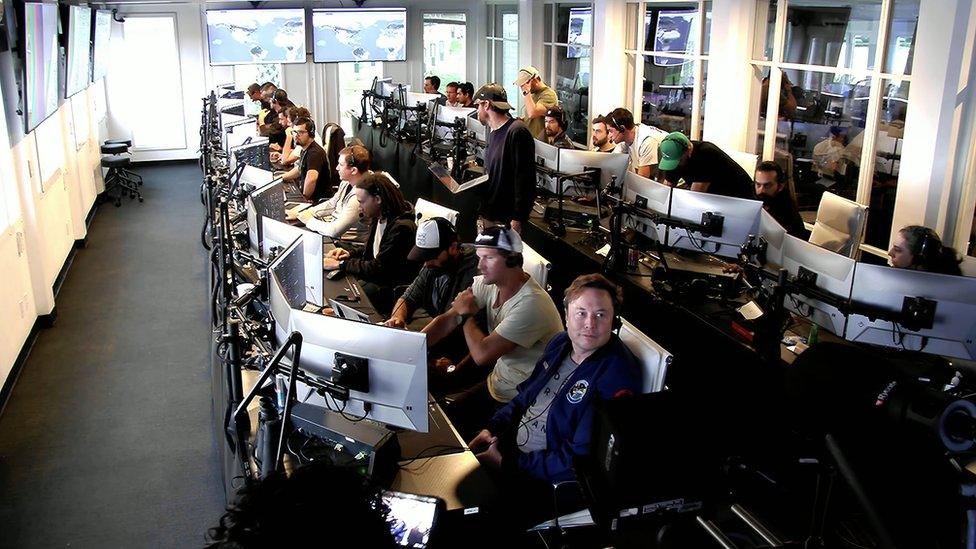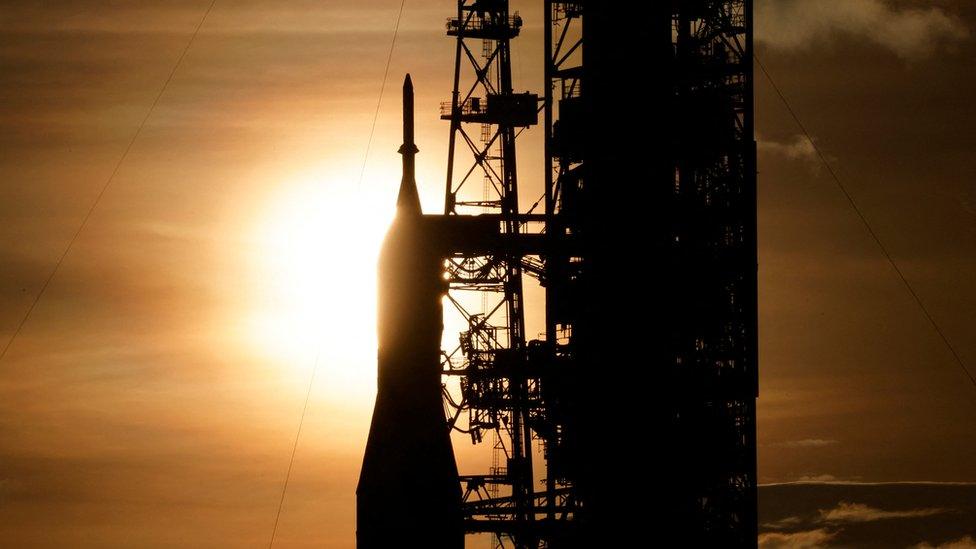Starship launch: Test is successful but rocket blows up after take off
- Published
- comments

Despite Starship blowing up in the sky, staff at SpaceX could be heard cheering its launch
After a three day delay, Elon Musk's huge rocket finally had lift off... and blew up four minutes after launch.
The launch was a big test day for Space X, no astronauts were on board, no-one was hurt and although it might seem strange, the scientists behind it were really pleased.
The test launch of Starship, the most powerful rocket ever built, was originally due to take place on Monday in Texas, USA, but was called off with minutes to go as a result of a frozen pressure valve.
It was rescheduled for Thursday, and successfully got off the ground - one of the big tests - but when the rocket booster tried to separate off from the Starship, systems failed, which led to the explosion.
WATCH: Elon Musk’s Starship was launched, but exploded after the booster failed to separate
Staff at Musk's company SpaceX were still pleased with the test despite the explosion, and were seen cheering from mission control.
Musk himself tweeted saying that they "learned a lot" and that another test will be taking place in a few months.
Nasa chief Bill Nelson also congratulated SpaceX, saying "every great achievement throughout history has demanded some level of calculated risk, because with great risk comes great reward".

Musk was with his team in mission control for lift off
What's special about Starship?
Normally, when a rocket returns to Earth, most of it burns up when it hits our planet's atmosphere.
However Starship is designed to be completely reusable.

Here you can see the rocket, which is black, and the booster beneath it
This means it will be able to take people back and forth from space, and Musk hopes this will usher in a new era of commercial space travel, where people can nip to Mars in the same way you might catch a flight to America.
It's also the most powerful rocket ever built - its huge booster, named Super Heavy, is made up of 33 engines, which makes it twice as powerful as Nasa's Artemis rocket.
It's this booster that caused Starship issues on Thursday.
Not all of its 33 engines successfully fired up, and it triggered the rocket's flight termination system.
- Published4 September 2022

- Published16 February 2021

- Published28 October 2022

